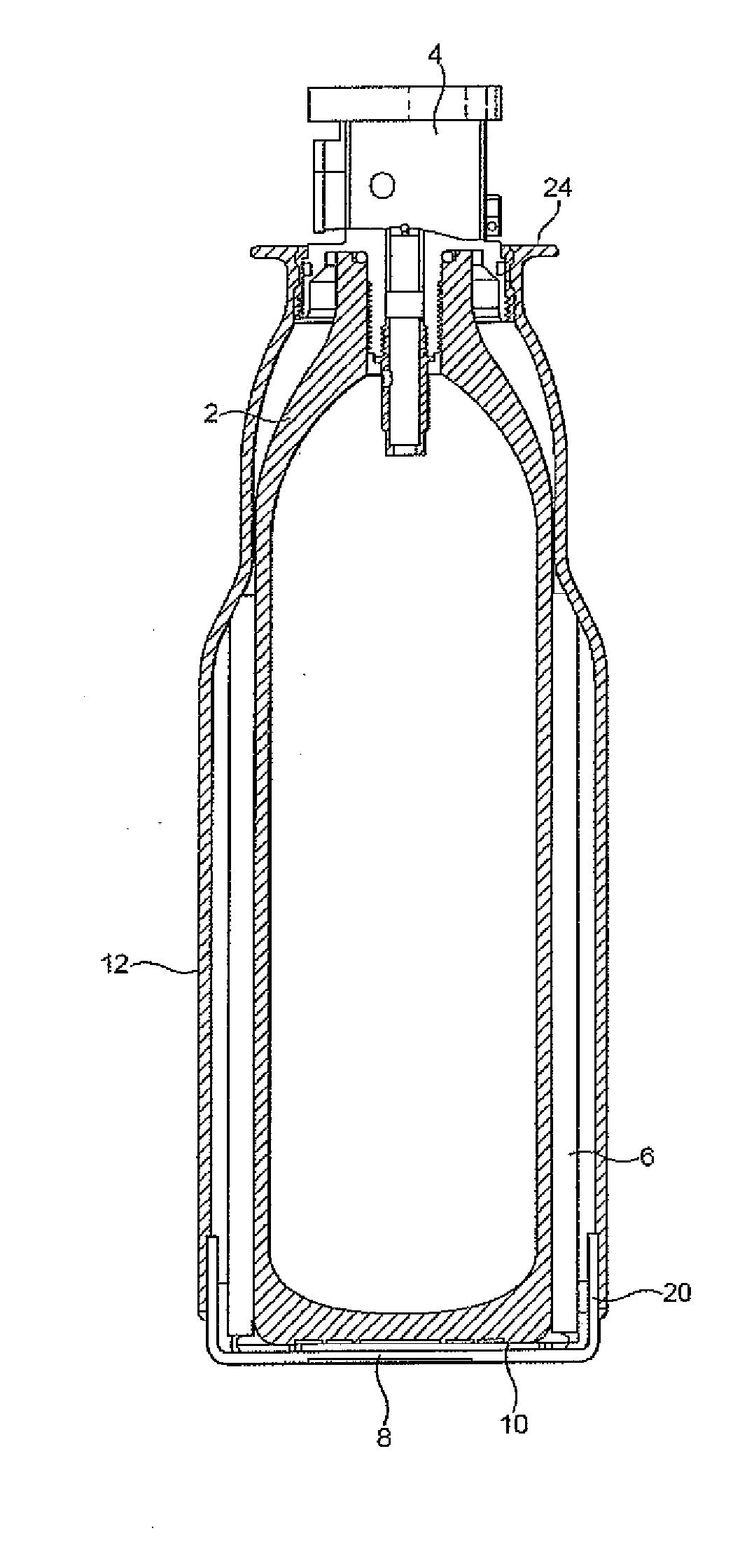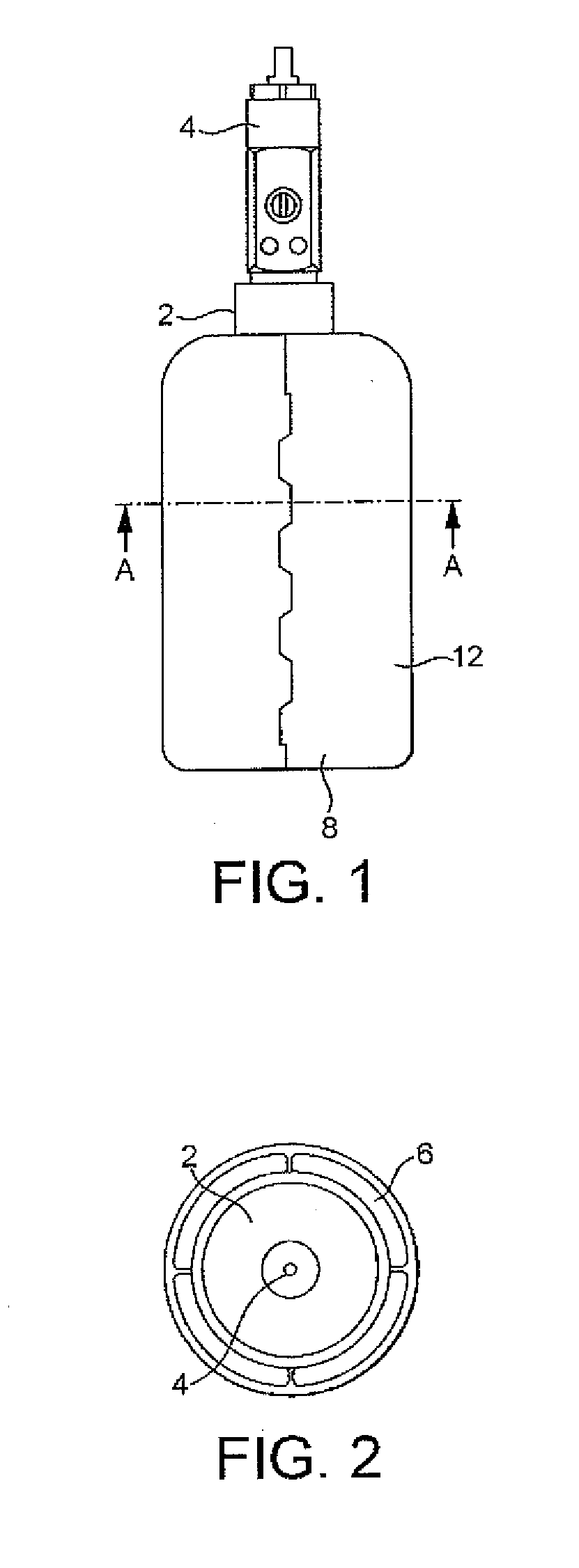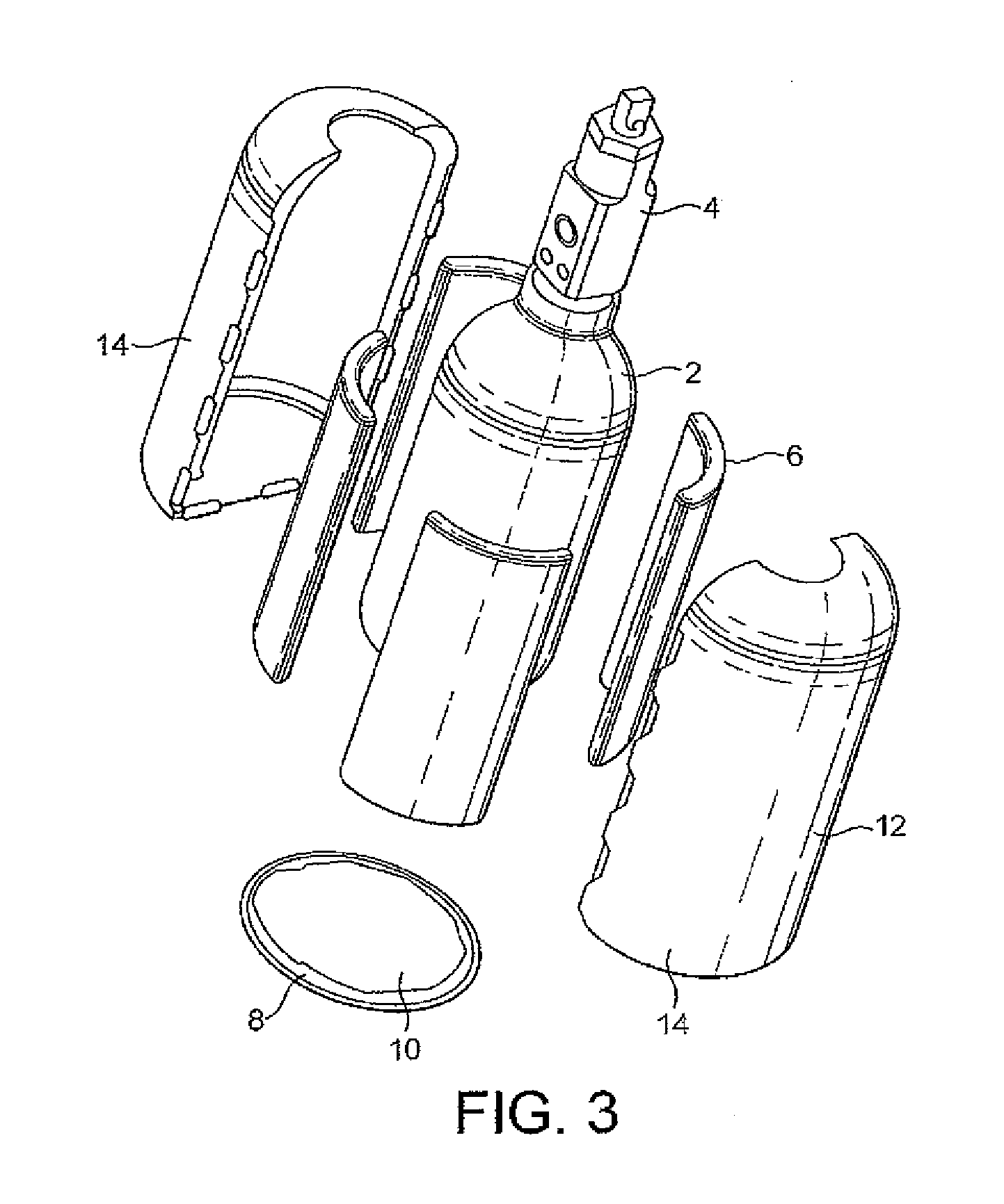Gas storage apparatus
a technology of gas storage apparatus and gas storage container, which is applied in the direction of domestic cooling apparatus, lighting and heating apparatus, and container filling under pressure, etc. it can solve the problems of potentially hazardous cylinders, inability to meet the requirements of use, and risk of nitrous oxide actually freezing in the cylinder, etc., to facilitate the storage of substantial quantities of non-permanent gas
- Summary
- Abstract
- Description
- Claims
- Application Information
AI Technical Summary
Benefits of technology
Problems solved by technology
Method used
Image
Examples
Embodiment Construction
[0029]Referring to FIGS. 1 to 3, the illustrated gas release apparatus comprises a pressure vessel in the form of lightweight gas cylinder 2, typically formed of aluminium. The cylinder typically has a water capacity of 1 l or less, typically 0.5 l. The cylinder contains a non-permanent gas, for example, nitrous oxide or carbon dioxide. The non-permanent gas is stored under pressure and is present both in the gaseous phase and the liquid phase, most of the molecules of the non-permanent gas being present in the liquid phase. The total weight of a full cylinder 2 is such that it can be readily lifted and held by hand. The cylinder 2 may therefore be made of, for example, aluminium.
[0030]The cylinder is closed by a valve 4, which may be manually or automatically operable to deliver gas, when desired. The valve 4 may be of the tamper-proof kind described in WO-A-2009 / 125180, the disclosure of which is incorporated herein by reference. The gas cylinder 2 is not provided with a dip tube....
PUM
 Login to View More
Login to View More Abstract
Description
Claims
Application Information
 Login to View More
Login to View More - R&D
- Intellectual Property
- Life Sciences
- Materials
- Tech Scout
- Unparalleled Data Quality
- Higher Quality Content
- 60% Fewer Hallucinations
Browse by: Latest US Patents, China's latest patents, Technical Efficacy Thesaurus, Application Domain, Technology Topic, Popular Technical Reports.
© 2025 PatSnap. All rights reserved.Legal|Privacy policy|Modern Slavery Act Transparency Statement|Sitemap|About US| Contact US: help@patsnap.com



